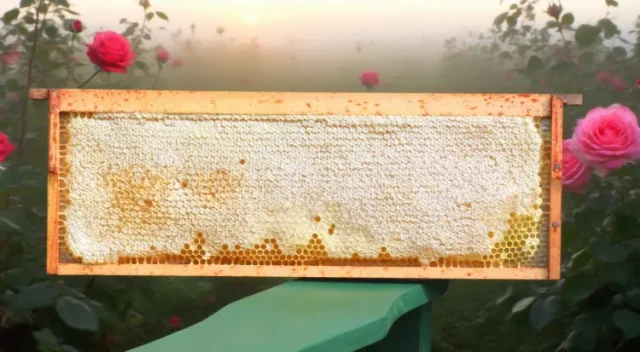For beekeepers, honeycomb harvesting is a delicate balance between maximizing yield, preserving product integrity, and safeguarding colony welfare. This guide outlines field-tested methods to achieve all three objectives, drawing on apicultural best practices and material science insights.
Harvesting Honeycombs Safely and Efficiently
Selecting the Right Tools for Precision and Hygiene
The foundation of efficient harvesting lies in using purpose-built tools:
- Uncapping knives with temperature control (maintained at 35–40°C/95–104°F) prevent honey degradation while removing wax seals.
- Bee brushes with ultra-soft bristles minimize agitation during comb removal.
- Food-grade stainless steel extractors reduce contamination risks compared to porous materials.
Pro Tip: Opt for tools with ergonomic handles—fatigue during repetitive motions can lead to rushed work and accidental hive damage.
Minimizing Bee Disturbance During Comb Removal
Timing and technique significantly impact colony stress levels:
- Harvest during mid-morning: Bees are typically foraging, reducing hive population density.
- Use smoke judiciously: 2–3 puffs of cool smoke at the entrance calm bees without altering honey flavor.
- Work in sections: Remove only 1–2 frames at a time, immediately covering gaps with dummy boards to maintain hive structure.
Research shows colonies recover 30% faster when harvests leave at least 40% of honey stores intact—this buffers against nectar scarcity while sustaining brood rearing.
Preparing Containers to Preserve Honey Quality
Avoiding Contamination Risks in Storage
Honey’s shelf life depends on storage conditions:
| Material | Advantages | Considerations |
|---|---|---|
| Glass | Impermeable to moisture/oxygen, preserves flavor | Heavy, breakable; requires dark storage to block UV |
| HDPE Plastic | Lightweight, shatter-resistant | Semi-permeable; may allow gradual moisture exchange over years |
Critical factors:
- Airtight seals prevent fermentation (target humidity: under 60%).
- UV protection slows antioxidant degradation—amber glass or opaque containers outperform clear materials.
Backup Strategies for Overflow or Emergencies
When primary containers are insufficient:
- Food-grade buckets with gamma-seal lids provide temporary storage for up to 2 weeks.
- Emergency workaround: Line non-food-safe containers with FDA-approved polyethylene bags (never PVC or vinyl).
Did you know? Honey stored at 14°C (57°F) maintains optimal viscosity while resisting crystallization—a balance commercial apiaries achieve with climate-controlled curing rooms.
Post-Harvest Hive Management
Monitoring Colony Health After Harvest
Post-harvest checks prevent long-term damage:
- 24-hour assessment: Verify bees are rebuilding comb (signals queen health).
- 72-hour feed check: Supplement with 1:1 sugar syrup if natural forage is scarce.
- Varroa mite audit: Stressed colonies are vulnerable—test with powdered sugar rolls if mite counts exceeded 2% pre-harvest.
Key observation: Bees fanning at the entrance indicates normal ventilation activity; clustering there may signal overheating from reduced honey stores.
Elevate Your Harvests With HONESTBEE’s Apiary Solutions
Commercial beekeepers trust HONESTBEE’s wholesale equipment to streamline harvesting while protecting their most valuable assets—the bees and their premium honey. From temperature-controlled uncapping tools to UV-resistant storage containers, our supplies help distributors equip apiaries for efficiency at scale.
Ready to refine your harvest protocol? Explore our beekeeping systems designed for yield-focused professionals who prioritize sustainable practices.
Prodotti correlati
- Pressa per miele manuale in acciaio inox con protezione per la spremitura di miele e cera
- Miele cera separazione cera stampa con macchina di cera separatore vite metallo
- Raschietto professionale per miele a lama larga per l'apicoltura e la lavorazione del miele
- Macchina elettrica per il flatting e la goffratura con vassoio per l'apicoltura
- Moderno misuratore di miele in legno con motivo a nido d'ape per mescolare e sgocciolare
Articoli correlati
- Fondi-cera Elettrici: Come la Tecnologia Moderna Migliora Efficienza e Risparmio
- Come ottimizzare gli estrattori manuali di miele per una raccolta su piccola scala senza problemi
- Come la lavorazione del miele influisce sulla nutrizione: Approfondimenti basati sulla scienza per scelte più sane
- Come filtrare il miele come un professionista: Metodi scientifici per la massima purezza
- Come scegliere i contenitori per la conservazione del miele che impediscono il deterioramento e prolungano la durata della conservazione




















